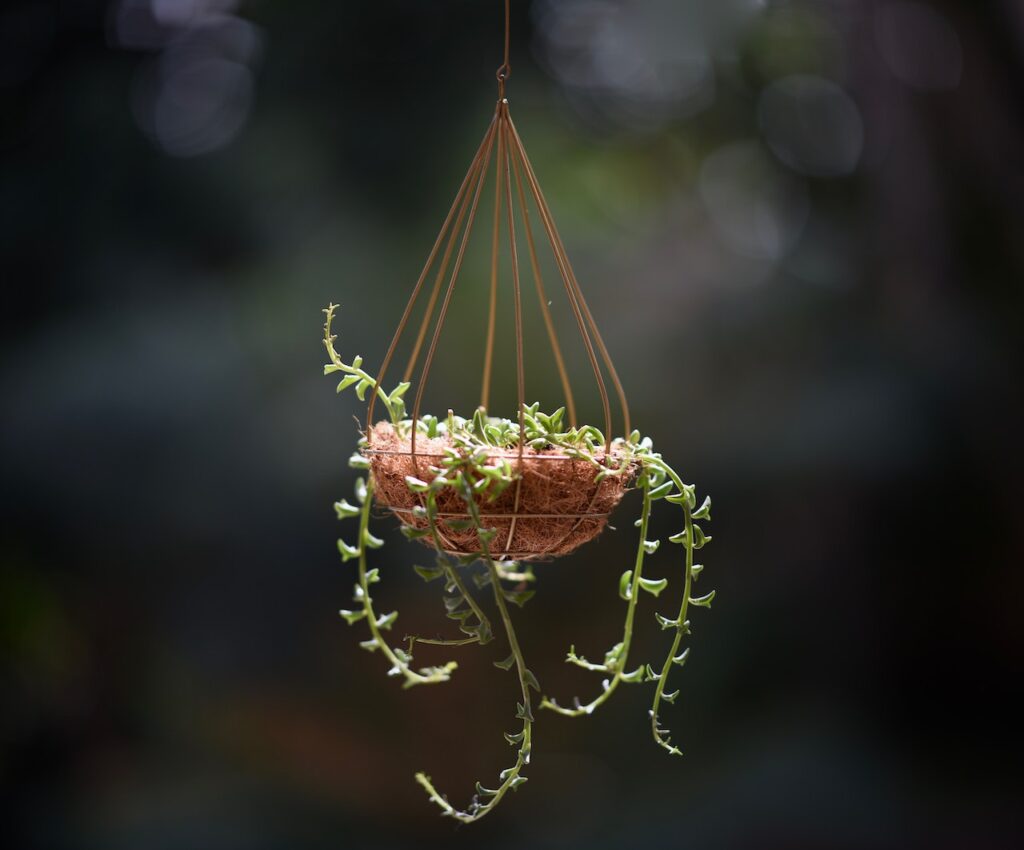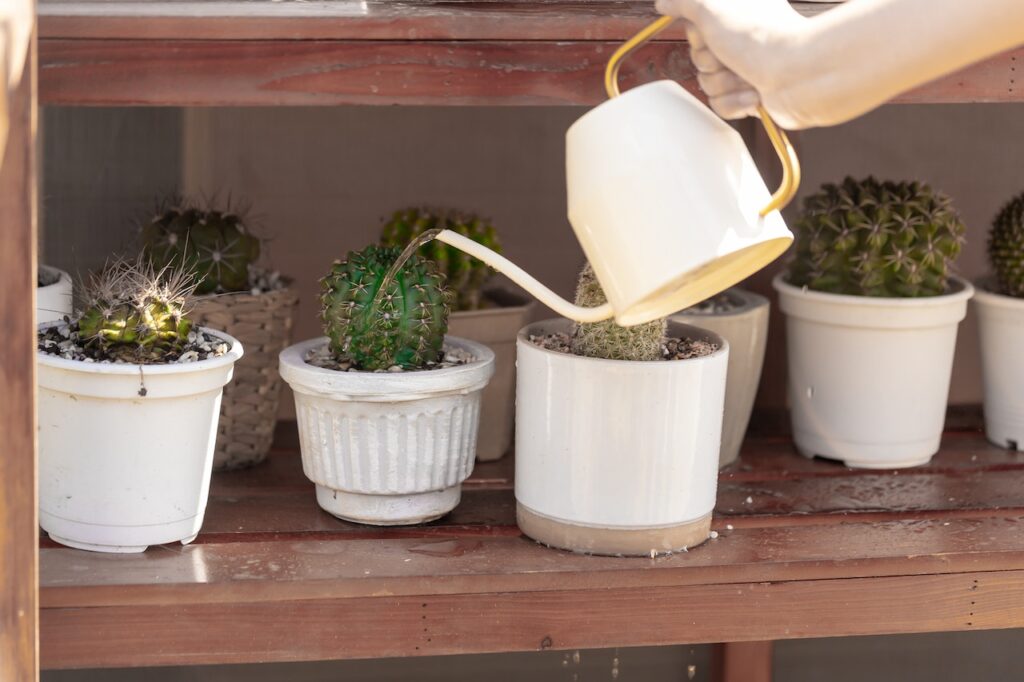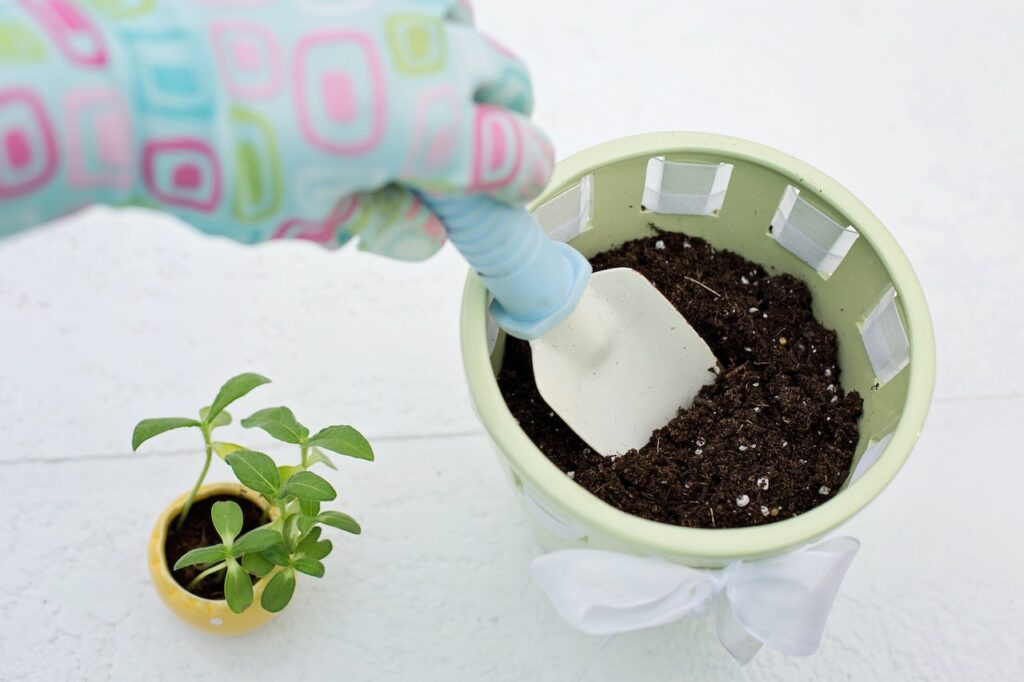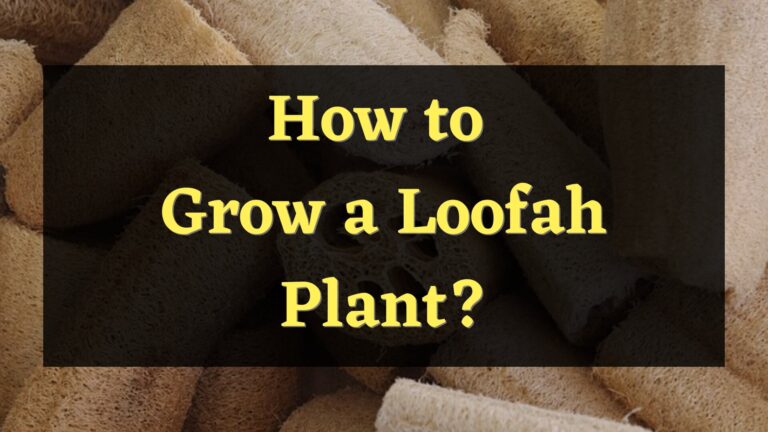Do you want to try growing a string of banana plants but don’t know how to start? Then this article is for you! In this blog post, I will provide information about how to propagate the string of bananas. I will enumerate all three methods on how to propagate this plant and provide you with the necessary steps. You can have insights on every method on how to propagate them and it is up to you to decide how you want to start propagating the string of banana plants.
3 Methods of Propagating a String of bananas plant
A string of banana plants can be propagated in three distinct methods. You must know all of the proper steps in each method for you to be able to properly propagate a string of bananas. Before even trying to propagate this plant, it is important to know all three ways how to do it. Knowing all three methods will help you choose the one that is the easiest to implement.
Here are the three methods how to propagate a String of bananas:

Sticking your Cuttings in the Soil
- Obtain a cutting at least two inches from the bottom of an adult string of bananas plant. Remove a few leaves from the stem long enough to make them easier to stick in the soil. Stick the end part of the cutting from where you cut it off.
- Find a well-loamy soil and use it to make a well draining mixture of potting soil. Water is needed for your string of bananas to grow, however, having stagnant water will cause your cutting to rot. Using a well draining potting mix will allow you to prevent this kind of scenario.
- Make sure to always shade your string of bananas cutting while it is still propagating and establishing its root system. A young string of bananas is very sensitive to sunlight and is prone to sunburns.
- Monitor your plant’s growth and take proper care of it while it is still growing. Aroundplant will start to appear. After another 2 weeks or more, you will start to notice a new development from your string of bananas plant. 2 weeks before the initial planting, the root system of your string of bananas.
- You should also check the quality of your soil. If you see that the soil is getting drier, put some water on it to keep it moist. Only after the string of bananas plant grows a strong root system and is much more established, then you can stop sprinkling water on it and switch to regular watering. The humidity in your own home will play a big part in how much water you give to your string of bananas plant.

Laying your Cuttings in the Soil
- The first step in this method is the same as the first method, obtaining a cutting from an adult string of bananas plant. The only difference is after obtaining a cutting, you won’t need to remove the leaves from your cutting. Instead, you will just have to lay the cutting down flat on the soil and let the stem touch it. This way, the string of banana plants that you are planting will start out with a full top and will easily have the plant’s trail.
- Note: You also need to have a well-draining pot mixture just like the 2nd step of the first method.
- If you notice that your cutting is already growing roots, adjust the stem so that the roots can dig deep down the soil. You can also use anything that can help hold the stem in a place like paper clips.
- Make sure to properly monitor the state of the young plant’s soil. If the soil feels a little dry, sprinkle some water to keep the soil moist but not totally soaked in water. You can stop this if your string of bananas plant is already well established and has a better root system and switch to regularly watering your young plant. The plant’s water intake should depend on the humidity in your area.
- You just check your young String of bananas plant daily and see for yourself if new roots start emerging. New roots will start emerging around two weeks after initially laying your cutting. Using a stem cutting that already has a root system will make this process quicker and the plant will be able to establish itself quickly in the new potting mix that you’ve created.
- Make sure to keep your young string of banana plants away from direct sunlight to prevent them from having direct exposure. Direct exposure to sunlight will lead to your young plant having sunburns.
- Note: If you have a bigger pot, you can simultaneously use these two methods of propagating a String of bananas plant as they don’t differ much from each other. You can also try to experiment to figure out what method a spring of banana plants grow faster.
Water Propagation
- Procure a cutting of a string of bananas plant, ideally two inches long from the bottom. Remove the leaves from the lower end of the stem.
- Prepare a container with water. The kind of water you use doesn’t affect the propagation of your string of bananas plant, so you can use any kind of water that you want to use.
- Monitor your cuttings regularly. In about 3 to 4 weeks, you will start noticing the root system of your string of bananas cutting start emerging.
- After seeing the root system of your cutting start emerging, you can transfer the cutting to a pot filled with a well-draining mixture of soil.
- Sparkle the soil with water if you notice it becoming too dry. Make sure to sparkle it with water enough to just keep the soil moist and not too wet. After noticing that the plant is already well established, you can switch to regularly watering the young string of bananas plant. A sign that your plant is already mature enough is seeing new leaves growing from the top of your plant.
- Don’t directly expose your string of bananas plant to sunlight even if it is already mature. The leaves of this plant are very sensitive to sunlight and will be burnt if it is directly exposed.
The best method to propagate a String of bananas

The best method of propagating a string of bananas plant is by water propagation. This will allow you to be sure that your string of bananas plant has already established a strong root system before you transfer it to a pot. Although If compared to the other two methods, this approach is a little more difficult. However, the easiest method of propagating it is laying its cut down in a potting mix.
How to care for the string of bananas plant?
These are the proper ways to take good care of your string of bananas plant:
- Provide it with porous and well-draining soil.
- Always keep the soil around it moist.
- Choose a location that is bright but not directly exposed to sunlight.
- Using a string to support its vines
- Regularly pruning your plant.
FAQs
Are strings of bananas fast-growing?
A string of bananas is low maintenance, quick-growing succulent plant. These plants can be enjoyed by beginners as they are really easy to plant and take care of. They do not require fertilizing, repotting, and even pruning.
How long does the string of bananas take to root?
After propagating the cutting of a string of bananas plant, you will see its root system growing in about 2 to 3 weeks. After about 4 weeks, you will start noticing a lot of new roots emerging from your young string of bananas plant.
How often should a String of bananas be watered?
A string of bananas is a succulent plant that is very known for its drought tolerance. You will have to depend on the status of the plant’s soil on whether to water it or not. If you notice that the soil is dried up, then water your plant immediately. Make sure to just keep the soil moist and avoid overwatering your string of bananas plant.
Conclusion
Although there are three ways to propagate a string of bananas, there doesn’t seem to be much of a difference between the three of them. Albeit almost the same, each method has its own pros and cons. The best method to grow a string of banana cutting is water propagation but the easiest is to just lay the cutting down on the soil, wait for them to establish a rooting system, and just allow the roots to dig deep into the soil.

Elizabeth Mcmillan is a passionate gardener with a strong interest in plants. She used to be a teacher, but Elizabeth has spent the last few years immersing herself in the world of plants, learning about their biology and cultural value and trying out different ways of growing them in her own garden. Elizabeth Mcmillan loves indoor plants, succulents, and cacti, and her friends and family know her as a plant care expert.







